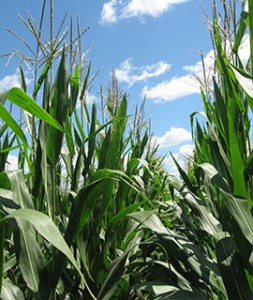Tillage, planting, fertilizer application and harvest all require field work to be completed. The timing and sequencing of these activities are critical for crop development, field dry down and farm profitability. Members of the Useful-to-Usable team have compiled weekly reports of days suitable for field work and planting and harvest progress from the state offices of the National Agricultural Statistics Service to understand the historical trend in days suitable during planting and harvest. An important objective of this research is to construct a predictive model of days suitable as a function of weather and soil type at a given location. We are using historical field work and weather data, together with soil information, to construct a statistical model that explains as much of the variation in historical field work days as possible so that we can use this information in the development of decision support tools to aid farmers in:
- Selecting what size of machinery to purchase,
- Determining the risks and rewards of alternative fertilizer application timing, and
- Predicting how we expect field work days to be different in the future based on predicted climate change.
Over the period from 1980-2010, there is an overall trend towards fewer days suitable per week during the planting period and more days suitable during the harvest period. There are differences across states, as is shown in the table below.
Table UPDATED 8/30/2017
Table 2 Mean Weekly Days Suitable for Fieldwork, 1980-2010
| |
Entire
growing
season
|
Planting Period1
|
Harvest period1
|
| State |
Mean
(S.D.)
|
Mean
(S.D.)
|
Difference between 1980-1994 and
1995-2010
|
Mean
(S.D.)
|
Difference between 1980-1994 and
1995-2010
|
| Illinois |
4.8
(1.8)
|
3.7
(1.9)
|
( – )***
|
5.2
(1.5)
|
( + )***
|
| Indiana |
4.6
(1.8)
|
3.5
(1.9)
|
( – )***
|
5.1
(1.5)
|
( + )***
|
| Iowa |
4.6
(1.8)
|
3.8
(1.9)
|
( – )***
|
5.0
(1.5)
|
( + )***
|
| Kansas |
4.7
(1.9)
|
4.1
(1.8)
|
( + )***
|
5.0
(1.8)
|
( + )***
|
| Missouri |
4.6
(1.9)
|
3.5
(1.9)
|
( + ) **
|
4.7
(1.8)
|
( + )***
|
Table notes: All values are weekly reports of the number of days between 0 and 7, averaged over all USDA Crop Reporting Districts in a given state. ** and *** denote <5% and <0.1% confidence levels for t-tests of the directional (+, -) difference in means between time periods.
1 Weeks when planting and harvest take place each year based on USDA-NASS weekly crop progress and condition reports issued by state NASS offices.
 Researchers with the Climate and Corn-based Cropping Systems Coordinated Agricultural Project (commonly known as the Sustainable Corn Project) have documented 130 findings, some of which will be explored during a Feb. 11 webinar, open to the public through Iowa State University
Researchers with the Climate and Corn-based Cropping Systems Coordinated Agricultural Project (commonly known as the Sustainable Corn Project) have documented 130 findings, some of which will be explored during a Feb. 11 webinar, open to the public through Iowa State University